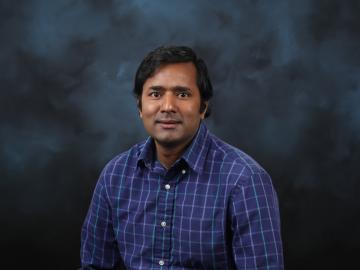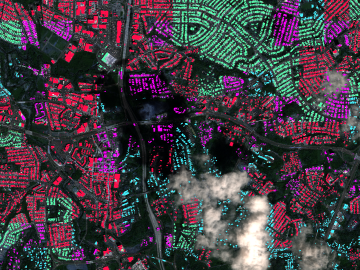
Filter News
Area of Research
- (-) Energy Science (40)
- (-) Supercomputing (60)
- Advanced Manufacturing (4)
- Biology and Environment (31)
- Computational Engineering (1)
- Computer Science (9)
- Electricity and Smart Grid (2)
- Energy Frontier Research Centers (1)
- Functional Materials for Energy (1)
- Fusion and Fission (2)
- Materials (54)
- Materials for Computing (10)
- National Security (16)
- Neutron Science (18)
- Quantum information Science (9)
News Topics
- (-) Big Data (27)
- (-) Composites (17)
- (-) Machine Learning (20)
- (-) Mercury (3)
- (-) Microelectronics (1)
- (-) Nanotechnology (15)
- (-) Quantum Science (26)
- 3-D Printing/Advanced Manufacturing (81)
- Advanced Reactors (7)
- Artificial Intelligence (42)
- Bioenergy (29)
- Biology (19)
- Biomedical (22)
- Biotechnology (6)
- Buildings (39)
- Chemical Sciences (16)
- Clean Water (8)
- Computer Science (108)
- Coronavirus (25)
- Critical Materials (12)
- Cybersecurity (14)
- Energy Storage (74)
- Environment (69)
- Exascale Computing (27)
- Fossil Energy (2)
- Frontier (32)
- Fusion (2)
- Grid (41)
- High-Performance Computing (44)
- Hydropower (3)
- Isotopes (2)
- Materials (45)
- Materials Science (40)
- Mathematics (4)
- Microscopy (14)
- Molten Salt (1)
- National Security (11)
- Neutron Science (20)
- Nuclear Energy (11)
- Partnerships (12)
- Physics (8)
- Polymers (13)
- Quantum Computing (20)
- Security (10)
- Simulation (18)
- Software (1)
- Space Exploration (6)
- Statistics (1)
- Summit (44)
- Transportation (70)
Media Contacts

Jitendra Kumar, a researcher at the Department of Energy’s Oak Ridge National Laboratory, has been elevated to the grade of senior member of the Institute of Electrical and Electronics Engineers (IEEE).

Scientists at the Department of Energy’s Oak Ridge National Laboratory have developed a new method to peer deep into the nanostructure of biomaterials without damaging the sample. This novel technique can confirm structural features in starch, a carbohydrate important in biofuel production.

We have a data problem. Humanity is now generating more data than it can handle; more sensors, smartphones, and devices of all types are coming online every day and contributing to the ever-growing global dataset.

A novel approach developed by scientists at ORNL can scan massive datasets of large-scale satellite images to more accurately map infrastructure – such as buildings and roads – in hours versus days.

A team from the ORNL has conducted a series of experiments to gain a better understanding of quantum mechanics and pursue advances in quantum networking and quantum computing, which could lead to practical applications in cybersecurity and other areas.

Researchers across the scientific spectrum crave data, as it is essential to understanding the natural world and, by extension, accelerating scientific progress.

For nearly three decades, scientists and engineers across the globe have worked on the Square Kilometre Array (SKA), a project focused on designing and building the world’s largest radio telescope. Although the SKA will collect enormous amounts of precise astronomical data in record time, scientific breakthroughs will only be possible with systems able to efficiently process that data.

Students often participate in internships and receive formal training in their chosen career fields during college, but some pursue professional development opportunities even earlier.

A joint research team from Google Inc., NASA Ames Research Center, and the Department of Energy’s Oak Ridge National Laboratory has demonstrated that a quantum computer can outperform a classical computer

ORNL and The University of Toledo have entered into a memorandum of understanding for collaborative research.


